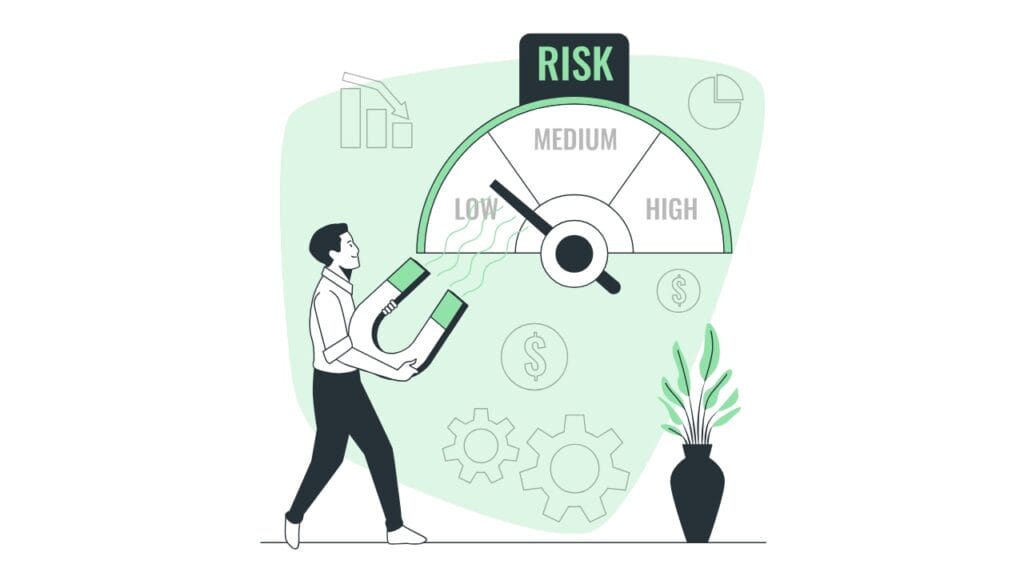Introduction:
In the vast and dynamic landscape of investment, where discussions often revolve around numerical analyses, statistical charts, and shifts in market trends, there exists a distinct and captivating niche that enthralls individuals with a deep appreciation for history, art, or nostalgia—collectible investments. These investments, encompassing a diverse range of tangible assets such as rare coins, stamps, vintage cars, and fine wines, possess an enchanting allure that transcends the realm of mere financial gain. Indeed, they evoke sentiments and passions beyond the cold calculations of profit margins and stock prices.
At the heart of collectible investments lies a rich tapestry of human history, cultural significance, and artistic expression. Each item, whether it be a centuries-old coin or a vintage automobile, carries with it a unique story and legacy that resonates with collectors and enthusiasts alike. These objects serve as tangible embodiments of our collective heritage, offering a glimpse into bygone eras and preserving moments of beauty and innovation for future generations to cherish.
However, venturing into the realm of collectible investments demands more than just a casual interest or sentimental attachment. It requires a comprehensive understanding of the intricate dynamics that govern this specialized market—a realm where factors like rarity, provenance, condition, and demand exert profound influence on value. Moreover, investors must navigate a landscape fraught with risks, ranging from fluctuations in market demand and authenticity concerns to the challenges posed by illiquidity and market volatility.
Despite these challenges, the allure of collectible investments remains undiminished, drawing investors seeking to diversify their portfolios and cultivate passions beyond traditional asset classes. For those willing to undertake the journey, the world of collectible investments offers not only the potential for financial rewards but also the opportunity to engage with history, culture, and art in a profoundly personal and meaningful way. Thus, while the road may be fraught with uncertainties, the rewards of delving into collectible investments can be as enriching and fulfilling as the treasures they seek to acquire.
Table of Contents
Exploring the Landscape of Collectible Investments :
Collectible investments represent a captivating realm within the broader spectrum of investment opportunities, characterized by a diverse array of tangible assets that extend their significance far beyond their initial purchase price. These assets encompass a rich tapestry of cultural artifacts, ranging from timeless artworks crafted by celebrated masters to coveted memorabilia steeped in the lore of popular culture. Each piece serves as a tangible manifestation of humanity’s creativity and heritage, embodying narratives that resonate across generations.
For collectors and investors alike, the allure of collectible investments lies not only in their potential financial returns but also in the intrinsic value they hold. Unlike conventional securities, which are often divorced from tangible utility, collectibles possess an enduring allure that transcends monetary considerations. They serve as tangible touchstones to pivotal moments in history, expressions of artistic genius, or embodiments of cherished memories and cultural phenomena.
Recognizing the vast landscape of collectible investments is paramount for investors seeking to broaden their portfolios beyond traditional asset classes. Whether delving into the world of fine art, rare coins, vintage automobiles, or antique furniture, understanding the nuances of each niche is essential for making informed investment decisions. This comprehension allows investors to navigate the market with confidence, identifying opportunities that align with their financial goals, risk tolerance, and personal passions.
Furthermore, diversifying one’s investment portfolio with collectible assets offers a unique avenue for hedging against market volatility and inflationary pressures. While traditional financial instruments may fluctuate in response to economic cycles and geopolitical events, the intrinsic value of collectibles tends to endure over time. As such, they can provide a stabilizing influence within a broader investment strategy, complementing more traditional holdings such as stocks and bonds.
In essence, the world of collectible investments beckons with promises of both financial reward and cultural enrichment. By embracing the diverse landscape of collectibles and understanding their inherent value propositions, investors can embark on a journey that transcends mere financial gain, enriching their lives with tangible manifestations of human creativity, history, and cultural heritage.

The Allure of Collectible Investments:
Collectible investments stand out distinctively from conventional financial instruments due to their profound emotional appeal, a factor that significantly influences their value. Unlike stocks or bonds, which hinge predominantly on economic fundamentals and market dynamics, collectibles derive their worth from a complex interplay of subjective elements such as rarity, historical significance, and aesthetic appeal. This emotional resonance imbues these assets with a unique allure that extends beyond mere financial considerations.
The subjective nature of collectibles renders them more than just tangible assets; they become repositories of history, culture, and personal passion. For instance, a rare piece of artwork may hold sentimental value for its historical context or artistic brilliance, driving collectors to pursue it ardently despite its monetary worth. Similarly, vintage cars evoke nostalgia for a bygone era, appealing to enthusiasts who cherish the craftsmanship and design of yesteryears.
Moreover, the emotional connection fostered by collectible investments often transcends the realm of financial gain, instilling a profound sense of pride and satisfaction among collectors. The act of acquiring, preserving, and showcasing these treasures becomes a testament to one’s individuality and appreciation for the finer things in life. Whether it’s a rare stamp collection passed down through generations or a prized wine cellar curated with care, each collectible embodies a story and passion that goes beyond its monetary value.
In the world of collectible investments, enthusiasts are driven not just by profit motives but by a deep-seated passion for the objects of their desire. This emotional investment adds an intangible dimension to the collectibles market, shaping trends, driving demand, and elevating certain assets to iconic status. As such, while conventional financial instruments may fluctuate based on market trends and economic indicators, collectibles endure as timeless treasures that evoke emotions, memories, and cultural significance.
Mitigating Risks in Collectible Investments :
Collectible investments hold an undeniable allure, drawing investors with the promise of owning a piece of history, culture, or art. However, this allure is accompanied by inherent risks that necessitate careful consideration. One significant challenge with collectible investments lies in their illiquidity. Unlike stocks or bonds that can be easily bought or sold on financial markets, many collectibles lack a readily available market, making it difficult for investors to liquidate their assets quickly. This illiquidity can be particularly problematic for investors seeking immediate returns or those who require access to funds in times of financial need. Consequently, individuals must carefully weigh the liquidity constraints of collectible investments against their own financial circumstances and investment goals.
Furthermore, the collectibles market operates with varying degrees of regulation and standardization, posing additional risks for investors. Unlike regulated financial markets overseen by government agencies, the collectibles market often lacks uniform standards and oversight. This lack of regulation creates an environment where fraudulent practices and market manipulation can occur more easily. Without proper safeguards in place, investors may find themselves susceptible to scams or purchasing overvalued assets.
Mitigating these risks requires a proactive approach. Investors must conduct thorough due diligence before entering the collectibles market, researching the authenticity and provenance of potential acquisitions. Seeking expert guidance from reputable appraisers, dealers, or investment advisors can provide invaluable insight and help navigate the complexities of the market. Additionally, adopting a long-term investment horizon is essential when investing in collectibles. By recognizing that the value of collectibles may fluctuate over time and that liquidity may be limited, investors can better position themselves to weather market volatility and maximize returns in the long run.
In essence, while collectible investments offer unique opportunities for diversification and potential appreciation, they also entail significant risks. Understanding and mitigating these risks through careful research, expert advice, and a patient investment approach are essential steps for investors looking to capitalize on the allure of collectibles while safeguarding their financial interests.
Diversification Strategies for Collectible Investments :
Diversification stands as the cornerstone of prudent investing, and its significance reverberates strongly within the realm of collectible investments. Embracing diversification shields investors from the adverse impacts of market volatilities and uncertainties inherent in any investment landscape. Within the domain of collectibles, this principle holds true as well, offering a strategic shield against potential risks.
When considering collectible investments, it’s paramount to recognize the inherent variability among different categories of collectibles. By judiciously spreading investments across diverse categories, such as art, rare books, or numismatics, investors can effectively dilute the impact of market fluctuations that may affect any single asset class. This diversification strategy acts as a safeguard, ensuring that the overall performance of the investment portfolio remains resilient even in the face of adverse market conditions. For instance, while the value of a particular art piece may stagnate or decline temporarily due to shifting market preferences or economic downturns, the performance of other collectible assets within the portfolio may compensate for these fluctuations, thus maintaining overall portfolio stability.
Moreover, diversification extends beyond the boundaries of collectible assets alone. Combining collectible investments with more traditional assets, such as stocks, bonds, or real estate, further enhances portfolio resilience and balance. The inclusion of traditional assets introduces a layer of stability and liquidity, complementing the relatively illiquid nature of many collectibles. This balanced approach not only mitigates risk but also offers investors the flexibility to capitalize on opportunities across diverse asset classes.
In essence, diversification in collectible investments is not merely a prudent strategy but a strategic imperative. By embracing a diversified approach, investors can navigate the complexities of the collectibles market with confidence, harnessing the inherent potential of these tangible assets while safeguarding their financial well-being.
Conclusion:
In conclusion, collectible investments offer a unique avenue for investors to engage with tangible assets that hold both cultural and financial value. However, navigating the landscape of collectibles requires careful consideration of the associated risks and rewards. By understanding the factors that influence the value of collectibles, conducting thorough research, and adopting a diversified approach, investors can unlock the potential of this intriguing asset class while safeguarding their financial interests for the future.
